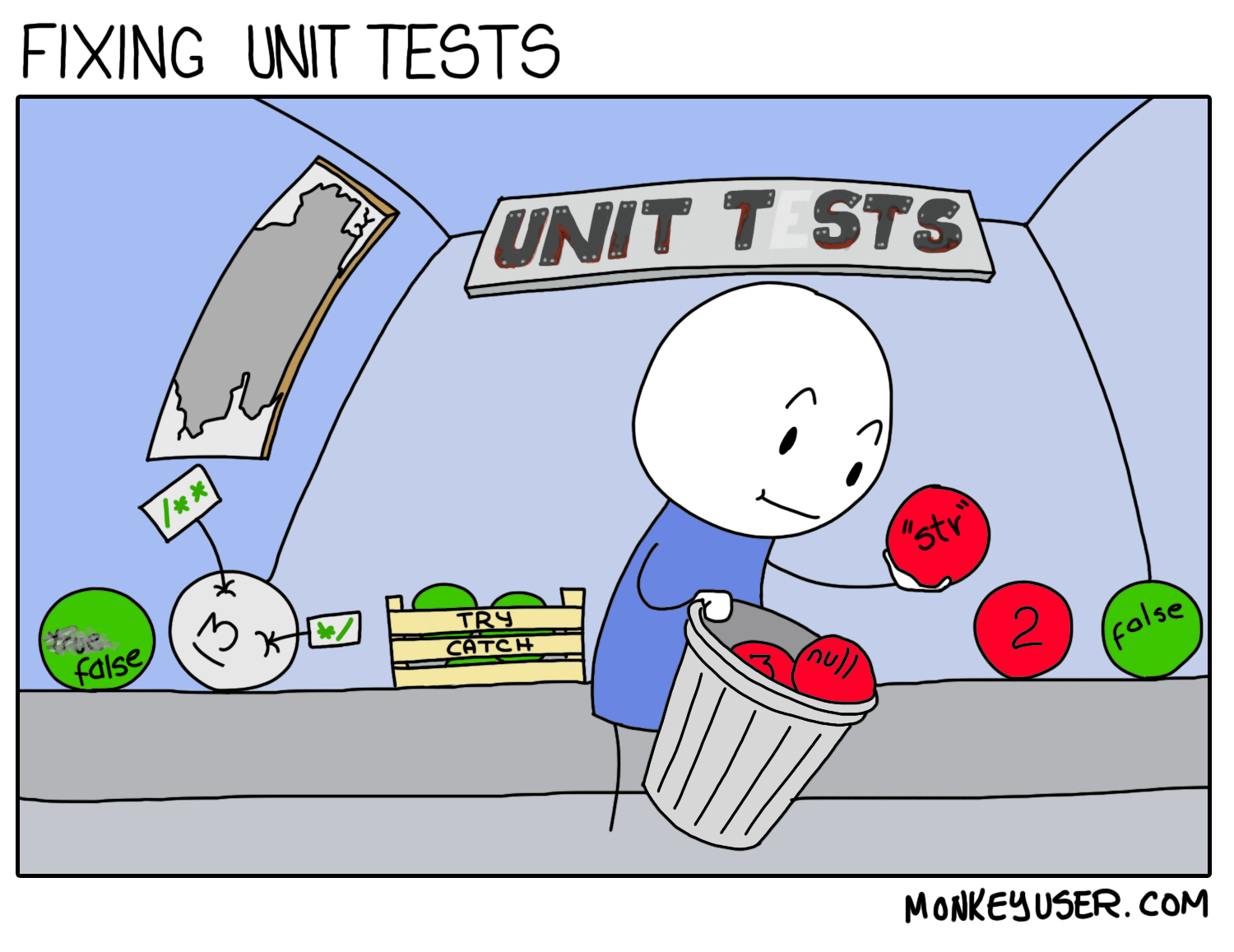How to step up your automated tests game
This is a follow-up of my previous post here. If you’ve ever had to write automated tests, you might have some bad memories lingering around. Automated tests have a way of becoming troublesome as time goes by. You end up spending more time fixing the tests than adding actual features. When that happens, you don’t care about test anymore, you don’t run them, you’re not worried when they fail and you just don’t add new ones. That leads to brittle code and things break really bad really fast. I’m here to tell you there is a way to keep automated tests manageable.
Simple is better
Simple tests are the better tests. They should be simple to read, simple to run and simple to add. Clean up the setup. Wrap complicated setup in nicely named functions. Keep the logic linear. You should never have an if in your tests and you should scarcely use for loops or other exotic structures and/or logic. It’s as simple as this. When you write simple tests, you get easy to maintain tests.
Be precise
It should be clear what you are testing. A very good tip I have for you on this is to use the given/when/then format. What is that, you ask?! It’s a way of explicitly splitting your tests into three distinct sections.
Given should deal with setting up the data. Everything your test needs to run smoothly. This includes, but is not limited to: seeding the database, adding any mocks required, pre-generating any data and constructing all the models that you will use later.
When is where the magic happens. You test whatever you need to test here. You should make sure it’s obvious what you are testing. If you feel you’re not being clear enough, then wrap the call in function and name it accordingly.
Then is where you check your data. You have to make sure your test did what you want after all. The checks should be clear and self-explanatory. Additionally, the checks should be the direct effects of the when section. Don’t do unrelated assertions, even if they are true, unless you like to fix unrelated tests for every change.
I prefer using comments prepending each of the sections to make the tests even more explicit.
Test one thing at a time
Try to keep your test scope as narrow as possible. There is a two-fold benefit to this approach. First you get a clean list of failing tests when you break something. Hopefully you have named them well enough to diagnose the issue with just that. Secondly, updating the tests to match the code after you make a change should be a lot easier.
As I have hinted, naming is important here. The test name should hint at the non-trivial setup required and contain the assertion being made. A big red flag is if you find yourself having to use and in the test name. Some examples of some good test names are:
if the user is unauthenticated the server should return unauthorized
if the user is unauthenticated the server should log the request
A bad test name would be:
if the user is unauthenticated the server should return unauthorized and log the request
You’re actually trying to test two behaviors here.
Can you think of any other useful advice that could help us all with our tests.

